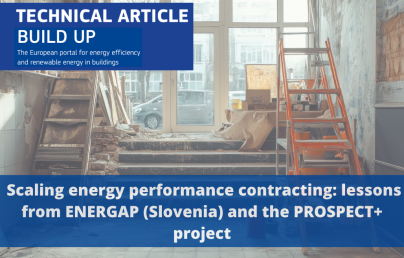
REVEAL: Unlocking aluminium’s potential for clean energy storage

REVEAL: Unlocking aluminium’s potential for clean energy storage
This new REVEAL project's study demonstrates that Al6060 cut wire granules offer a safe, efficient, and scalable aluminium fuel solution for renewable energy storage, enabled by a unique pore-forming oxidation mechanism.
Aluminium (Al) is a strong candidate for Renewable Metal Fuel (ReMeF) due to its high energy density and abundance, but using Al powder poses safety risks. This study explores Al6060 cut wire granules -larger, commercially available particles, as a safer yet highly reactive alternative. Findings reveal that their unique microstructure promotes fast, pore-driven oxidation, offering a practical and scalable path for clean, seasonal energy storage.
As Europe accelerates its transition to renewable energy, the need for efficient and scalable storage solutions has never been greater. With wind and solar energy generation fluctuating by nature, finding a reliable method to store excess power for later use is crucial to ensuring a stable, decarbonised electricity grid. One promising approach lies in the use of renewable metal fuels (ReMeF), which consist of metals that can store and release energy through controlled chemical reactions. Among them, aluminium stands out due to its abundance (the third most common element in the Earth's crust, making up 8.1% of its mass) (Kumar et al. 2025, Trowell et al. 2020) and recyclability (with over 75% of aluminium ever produced still in use today) (Bulei, 2022).
The use of aluminium as ReMeF comprises the following material cycle:
1) Metallic aluminium is produced with renewable electricity from alumina (Al2O3) by a carbon-free smelting process and stored without energy losses for months (Power-to-Alu).
2) In an Alu-to-Energy converter unit, aluminium reacts with water to generate heat, hydrogen and oxidized aluminium. H2 is converted immediately -i.e. without the need of storing it- to heat and electricity with a fuel cell.
3) Finally, the material cycle is closed by transforming the oxidised aluminium back into smelter-grade alumina (Haller et al. 2020).
By improving the way aluminium reacts with water in an Alu-to-Energy process, scientists are paving the way for a breakthrough in energy storage. This could play a vital role in Europe's journey toward climate neutrality by 2050, aligning with the EU’s Green Deal goals (European Commission, 2019).
Concerns related to aluminium
Many conventional approaches use aluminium powder for its reaction with water as this guarantees a fast release of energy. Yet, this poses significant safety concerns during transport and storage due to the risk of explosion when fine metal powders mix with air. To address this challenge, REVEAL project partners from the Eastern Switzerland University of Applied Sciences (OST) have focused on the use of commercially available aluminium 6060 alloy granules that are larger in size, inherently safer, and economically viable for practical energy applications.
The study of the REVEAL research team systematically evaluated the reactivity of these Al6060 granules in controlled aluminium-water reactions, where hydrogen is produced as a clean fuel (Agote-Arán et al. 2025). The team identified optimal reaction parameters by experimenting with different temperatures and alkaline conditions. These conditions represent a balance between achieving fast reaction kinetics and maintaining manageable operation in an Alu-to-Energy converter. Importantly, microscopy studies revealed that the internal structure of the Al6060 granules promotes pore formation during the reaction. This pore development increases the surface area available for reaction, leading to faster hydrogen generation while maintaining the safety benefits associated with their larger particle size.
Additionally, the research explored how granule shape, size, and pre-treatment (i.e. thermal or mechanical) affect performance. These findings underline the importance of carefully selecting and processing aluminium granules to optimise their efficiency and safety as renewable metal fuels. The research marks a significant step toward integrating aluminium-based energy systems into Europe’s sustainable energy landscape, reinforcing the role of innovative materials in the clean energy transition.
Resources
Agote-Arán, M., Welte, B., Freeman, R., Mutti, N., Haller, M., Heel, A., 2025. 'Al6060 cut wire granules for Al-water reaction: Evaluation of reaction conditions and granule treatments'. International Journal of Hydrogen Energy 117, 430–441. https://doi.org/10.1016/j.ijhydene.2025.03.117
Bulei, C., Stojanovic, B., Utu, D., 2022. 'Developments of discontinuously reinforced aluminium matrix composites: Solving the needs for the matrix'. J. Phys.: Conf. Ser. 2212, 012029. https://doi.org/10.1088/1742-6596/2212/1/012029
Communication from The Commission To The European Parliament, The European Council, The Council, The European Economic And Social Committee And The Committee Of The Regions The European Green Deal, 2019.
Haller, M.Y., Carbonell, D., Dudita, M., Zenhäusern, D., Häberle, A., 2020. 'Seasonal energy storage in aluminium for 100 percent solar heat and electricity supply. Energy Conversion and Management: X 5, 100017'. https://doi.org/10.1016/j.ecmx.2019.100017
Kumar, J., Starvin, M.S., Irulappasamy, S., 2025. Chapter eight - Tribological assessment of two-phase aluminum/zirconia composites for aerospace applications, in: Sultan, M.T.H., Uthayakumar, M., Korniejenko, K., Mashinini, P.M., Najeeb, M.I., Krishnamoorthy, R.R. (Eds.), Aerospace Materials, Aerospace Engineering. Elsevier, pp. 209–226. https://doi.org/10.1016/B978-0-443-22118-7.00008-7
Trowell, K.A., Goroshin, S., Frost, D.L., Bergthorson, J.M., 2020. 'Aluminum and its role as a recyclable, sustainable carrier of renewable energy'. Applied Energy 275, 115112. https://doi.org/10.1016/j.apenergy.2020.115112
Co-funded by the European Union under Grant Agreement No. 101069492 and the State Secretariat for Education, Research, and Innovation (SERI). Views and opinions expressed are however those of the author(s) only and do not necessarily reflect those of the European Union or CINEA. Neither the European Union nor the granting authority can be held responsible for them.
For media inquiries or further information, please contact: Ivana Koláčková (FENIX TNT), ivana.kolackova@fenixtnt.cz

